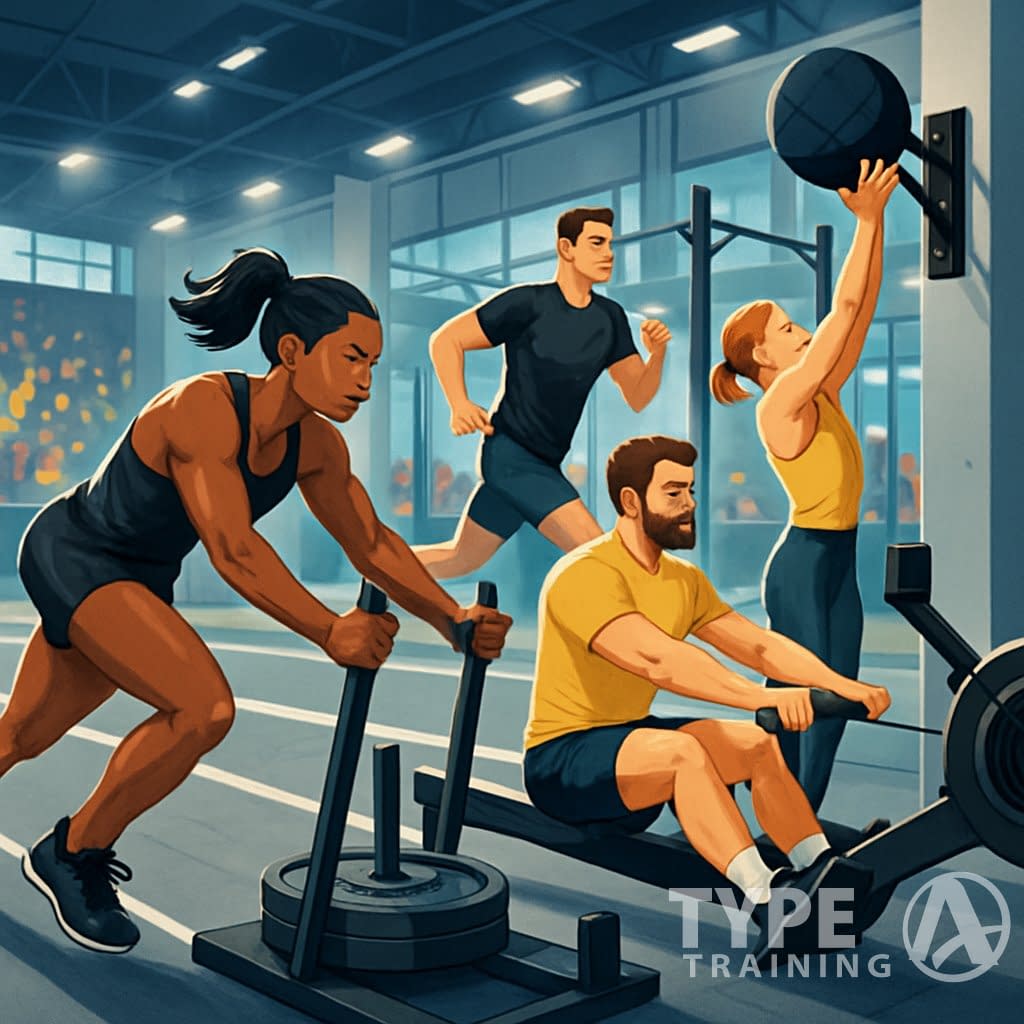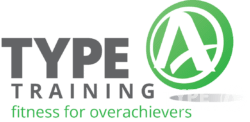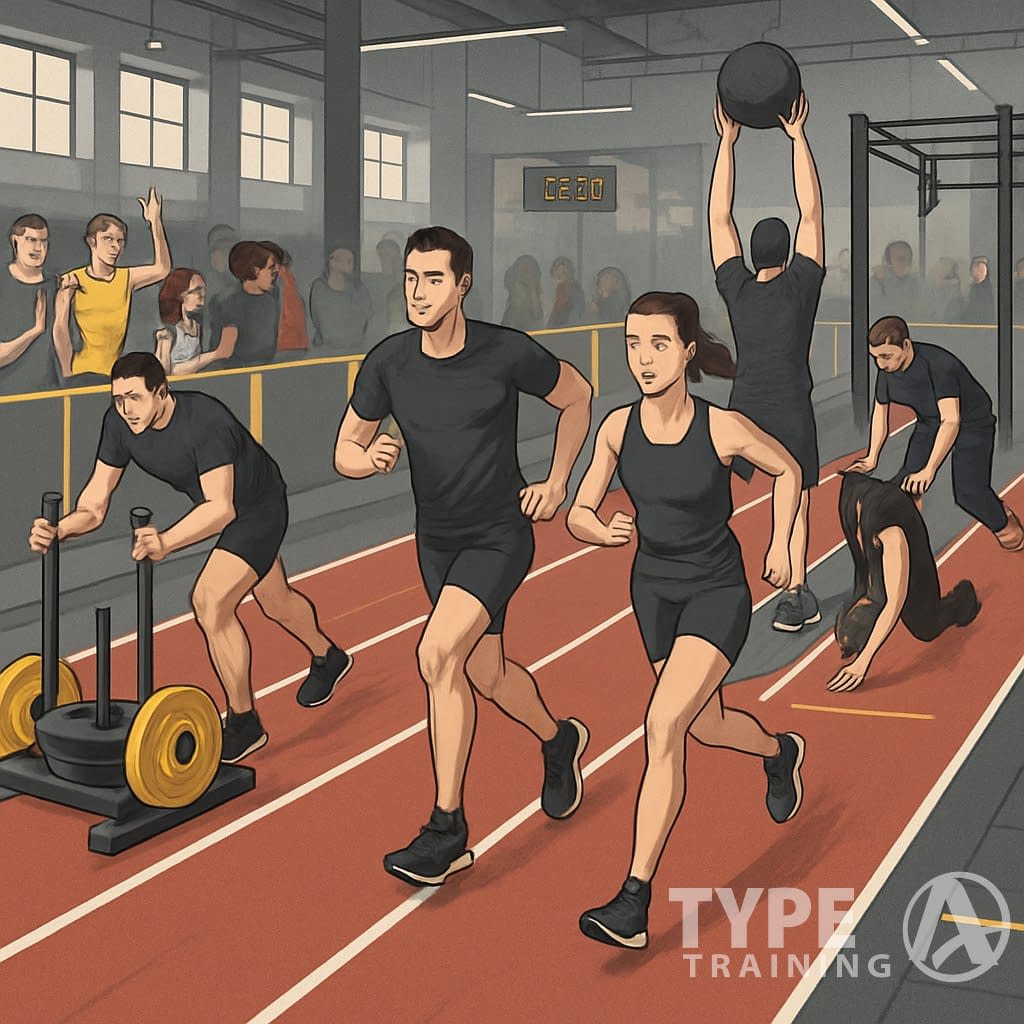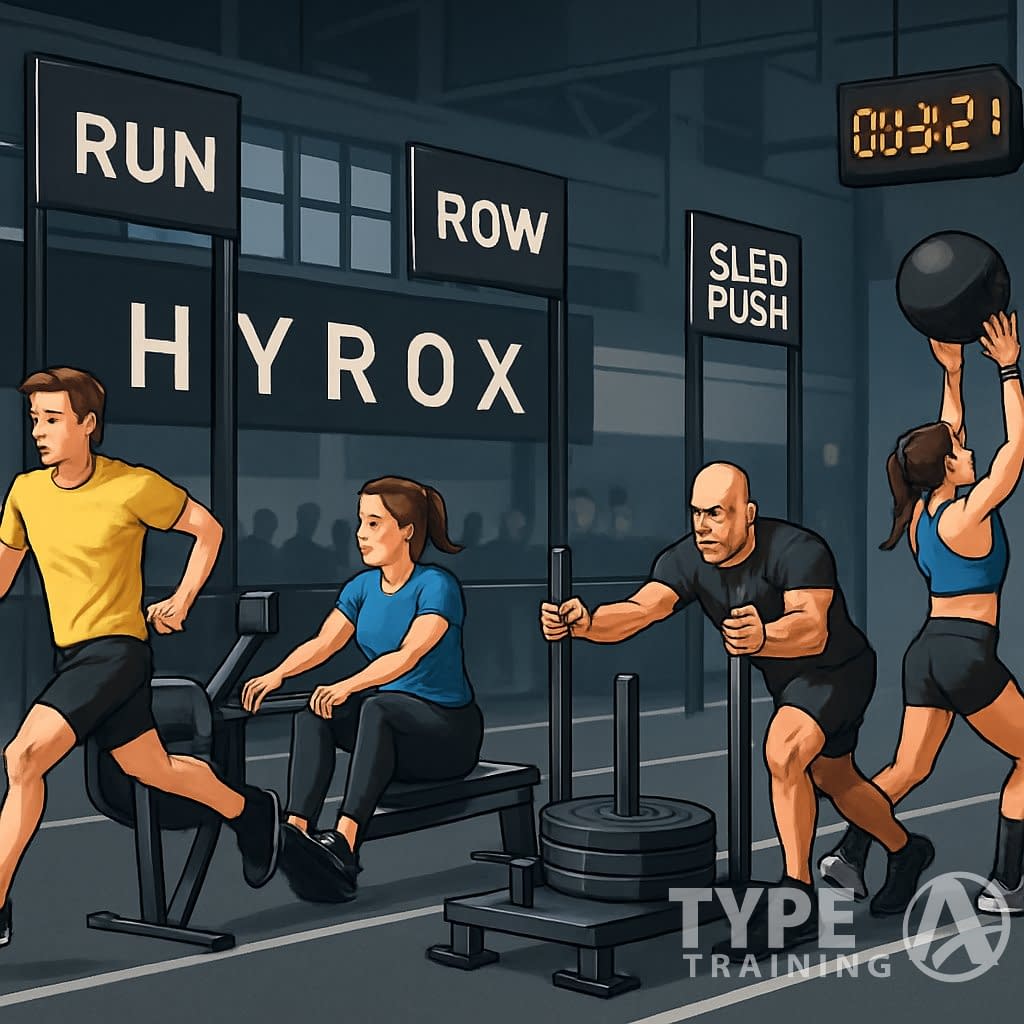HYROX has exploded onto the fitness scene as one of the fastest-growing races worldwide. It brings running and functional strength together in a way that’s tough but still feels like something most people can try. So, what is HYROX? It’s a unique challenge that combines both elements. If you’re wondering what is HYROX, you’re not alone—it’s a topic of growing interest. People frequently ask, what is HYROX and how does it work?
Launched in 2017, HYROX aimed to create a competition format anyone could join—elite athletes, regular gym folks, you name it. Every HYROX race sticks to the same setup: eight 1km runs, each with a functional workout station thrown in.
To understand what is HYROX, you should know it involves a combination of running and functional workouts, which makes it a versatile race for everyone.

Popular posts:
Walk into any HYROX event and you’ll see the same layout, whether you’re in New York, London, or Berlin. That global consistency means you can track your progress and compare results no matter where you race.
There are divisions for singles, doubles, and relays, plus both open and pro categories. You get to pick what fits your vibe and goals.
HYROX stands out because it blends endurance and strength in one race. You can’t just run fast or lift heavy—you’ve got to manage both.
The mix of community, clear standards, and an approachable structure keeps people coming back. There’s something about it that just clicks for a lot of athletes.
Key Takeaways
- HYROX started in 2017 to create a global, standardized fitness race
- The format mixes running with functional workout stations
- Its popularity comes from being accessible, consistent, and powered by a strong community
The Origin and Evolution of HYROX

HYROX started as a structured way to test both endurance and strength in one race. It began as a single event in Germany and quickly grew into a global competition, leading many to wonder, what is HYROX? This inquiry highlights its rising relevance in the fitness community and emphasizes why it’s becoming a favorite among athletes.
In essence, when considering what is HYROX, think of it as an innovative race format that blends endurance with strength.
Founders and Inception
HYROX was founded in 2017 in Hamburg, Germany by Christian Toetzke, a sports marketing expert, and Moritz Fürste, a two-time Olympic gold medalist in field hockey. They wanted a competition that made running accessible but also brought in the challenge of functional fitness.
Unlike obstacle races or CrossFit, HYROX offered a repeatable, measurable format. Every athlete faced the same running and workout sequence, so results could be compared across events.
The founders wanted it to be inclusive. No need to qualify, no time cutoffs—just show up and race.
That open-door approach helped HYROX appeal to everyone from casual gym-goers to hardcore endurance athletes.
Growth and Global Expansion
A key question athletes often have is, what is HYROX? It’s not just a race; it’s a community and a growing movement.
After launching, HYROX spread beyond Germany pretty quickly. By 2019, you could find events in several European cities, and it wasn’t long before North America jumped in.
The standardized format made it easy to bring HYROX to new places. Each race had eight 1 km runs, each paired with a functional workout station—think sled pushes, rowing, burpees.
COVID-19 slowed things down in 2020. The organizers adapted by refining equipment standards, improving judging, and making events run smoother.
By 2021 and 2022, participation bounced back hard. By 2023, HYROX had a strong presence in more than 30 cities around the world.
HYROX’s Place in Fitness Culture
HYROX sits somewhere between endurance sports and gym training. It doesn’t replace marathons or CrossFit, but it blends both worlds into something that feels familiar yet tough.
Athletes often call it a fitness revolution because it measures movements you already do at the gym. Running, rowing, lunges, and sled work—HYROX just packages them into a race with clear standards.
Fitness studios and training groups use HYROX prep as a core part of their programs. There’s now a whole community focused on measurable progress, competition, and shared goals.
HYROX Race Format and Structure
A HYROX race sticks to a fixed design: running mixed with functional fitness moves. Every event uses the same sequence, so you can compare your results anywhere.
So, what is HYROX? It’s the ultimate test of stamina and strength, designed for anyone looking to challenge themselves.
The structure balances endurance with strength. You’re not just tested on speed, but also on how well you handle repeated physical tasks.
Standardized Race Layout
Every HYROX event uses the same setup: 8 x 1 km runs paired with 8 workout stations. You run 1 km, hit a station, and repeat until you’re done.
This creates a predictable flow for every race. The structure never changes, so you can train knowing exactly what’s coming.
Events happen indoors, usually in big arenas or convention centers. That keeps conditions equal for everyone.
Whether you’re racing in Europe or North America, the layout is always the same. That’s a big part of HYROX’s appeal.
Running Segments
Running anchors the HYROX race. You cover 8 kilometers total, split into eight 1 km runs.
Each run happens before a workout station, so you’ve got to manage your pace and save some energy for what’s next.
The runs are on flat, indoor tracks, which means weather’s never a factor. You can focus on your pacing and endurance.
Transitions between running and workouts are brutal for a lot of people. Your heart rate stays high, and your body has to switch gears fast.
Understanding what is HYROX includes knowing that it tests your ability to transition between running and workouts effectively.
Training should mimic that back-and-forth demand. It’s not just about running or lifting—it’s both, over and over.
Functional Workout Stations
There are eight functional workout stations in every race, always in the same order. That helps you plan your race-day strategy.
Common stations include:
- SkiErg
- Sled Push
- Sled Pull
- Burpee Broad Jumps
- Rowing
- Farmers Carry
- Sandbag Lunges
- Wall Balls
Each station hits different muscle groups. Sled pushes hammer your legs, wall balls test your endurance and coordination.
You have to finish each station before starting the next run. The variety means no single skill dominates.
Ultimately, what is HYROX is a race that pushes athletes to their limits, integrating various fitness components.
HYROX blends endurance racing with strength challenges, making it a full test of functional fitness.
Inside the Functional Workout Stations
Each HYROX station targets a different kind of strength or endurance. You move from machines to weighted carries to bodyweight movements, all while getting more and more tired.
SkiErg and Rowing Challenges
The SkiErg simulates cross-country skiing. You pull handles down in a pattern that uses your lats, shoulders, and core.
It’s not just about strength—it’s about pacing, too. Go out too hard and your arms will quit on you fast.
The rowing machine comes later and works your legs, back, and arms. Coordination matters, because poor form wastes energy.
Both machines demand solid cardio and good technique. Consistent strokes and steady breathing help you hang on.
A lot of athletes train these movements separately to get comfortable and avoid burning out mid-race.
Sled Push and Sled Pull
The sled push is a beast. You drive a weighted sled across the floor with short, powerful steps.
Your quads, glutes, and calves get hammered. You also need grip and core stability to stay upright and keep moving.
The sled pull flips the script. You pull the sled toward you with a rope, stepping backward.
This one tests your arms, back, and balance. Controlling the sled without tripping can be harder than it looks.
Together, these two stations test raw lower-body power and pulling strength. Plus, you’ve got to keep your cool when your legs are already toast from running.
Burpee Broad Jumps and Wall Balls
The burpee broad jump mixes a regular burpee with a forward jump. Drop down, push up, and then leap as far as you can.
It’s a grind—explosive power meets constant up-and-down movement.
The wall balls have you squat with a medicine ball and toss it to a target on the wall. Your legs, shoulders, and core all get worked.
If you miss the target, you’ve got to do extra reps. That’s just rough.
Both moves challenge your form when you’re tired. Burpee broad jumps need strong hips, while wall balls demand steady pacing and focus.
Farmers Carry and Sandbag Lunges
In competition, athletes will find that what is HYROX extends beyond physical strength; it’s also a mental challenge.
Those who participate in HYROX often wonder, what is HYROX really about? It is about personal growth and pushing boundaries.
The farmer’s carry has you walk a set distance with heavy weights in each hand.
To grasp what is HYROX fully, one must experience the thrill and camaraderie of the event firsthand.
Grip, forearms, shoulders, and core are all in play. If you drop the weights or slow down, you lose time.
Sandbag lunges put a sandbag on your shoulders as you do walking lunges. Your quads, glutes, and hamstrings get crushed, especially after all that running.
These stations are all about loaded carries and single-leg strength. Stability is key, and grip fatigue is real.
Training with dumbbells, kettlebells, or sandbags can help you prep for what’s coming.
If you’re still asking yourself what is HYROX, just know it’s about community, fitness, and personal triumph.
HYROX Divisions and Competition Categories
HYROX gives you a bunch of ways to compete, depending on your goals and fitness level. You can go solo, join a team, or pick an age-based category.
HYROX Open and Pro
The HYROX Open division is where most people start. You do the full race—8 runs, 8 stations—with moderate weights and distances.
It’s a great entry point if you’re new or just want a solid challenge without going too heavy.
The HYROX Pro division ups the ante with heavier weights and tougher resistance. Sleds are heavier, wall balls are tougher, and you’ll need more strength overall.
Pro is for experienced athletes who want to push their limits. Both Open and Pro let you race solo and see how you stack up on global leaderboards.
Since the format never changes, your results are directly comparable to anyone else in your division, no matter where you race.
HYROX Doubles and Relay
If you don’t want to go it alone, try the HYROX Doubles division. You and a partner run together and split up the workout stations however you want.
It lightens the load for each person but keeps things competitive and strategic.
The Relay division is for teams of four. Each member does two runs and two workout stations.
Relay makes HYROX more accessible for beginners or groups who want to get a taste of the race without taking on the whole thing solo.
Doubles and Relay focus on teamwork and pacing. They let you soak up the event atmosphere without as much physical demand as the full individual race.
Age Groups and Qualification
HYROX splits competitors into age groups for fairer comparisons. Typical brackets start at 16–24, then 25–29, 30–34, and keep going in five-year jumps up to 70+.
As you delve deeper into what is HYROX, you’ll discover its unique blend of competition and fitness.
This setup lets you see how you stack up against your peers instead of only elite athletes.
You can qualify for major events like the HYROX World Championships. Top finishers in each division and age group snag spots to compete at these bigger competitions.
Why HYROX Is So Popular
HYROX has exploded in popularity. It’s got a clear structure, a global standard, and a blend of endurance and strength that attracts all sorts of people.
You can track progress over time, race alongside both elites and everyday folks, and count on the same format wherever you go.
Accessibility and Inclusivity
You don’t have to be a pro to join HYROX. The race mixes running with functional movements like sled pushes, lunges, and rowing—stuff you can train for in almost any gym.
It’s approachable for people who already do functional fitness, but also for anyone curious about trying a structured competition.
Many newcomers to the fitness world ask, what is HYROX? It’s an exciting entry into competitive fitness.
You can race solo, as a pair, or on a relay team. If you’re after a personal challenge, go it alone, or share the load with a partner if that sounds more fun.
The format is always 8 runs paired with 8 workouts, no matter where you compete. That consistency is honestly reassuring.
HYROX likes to call itself “the sport for every body.” You’re on the same course as elite endurance athletes, but you get to set your own pace and strategy.
That shared experience is a big part of the draw.
Global Community and Leaderboards
Every HYROX race sticks to the same format worldwide. You can compare your times with friends, folks in other countries, or even pros.
In short, if you’re curious about what is HYROX, it’s a race that invites all to join and test their capabilities.
To sum up what is HYROX, it’s about coming together as athletes, pushing limits, and celebrating fitness.
The global leaderboard adds some accountability and connection because your results matter beyond just one event.
The community aspect is real. Lots of participants train together or join local HYROX groups, which helps with motivation and sticking to your workouts.
When considering your next challenge, ask yourself, what is HYROX? It might just be your next big adventure.
Spectators make a difference, too. Thousands show up to cheer, so race day feels electric and supportive. You end up pushing harder than you thought you could.
Honestly, that blend of competition and community makes HYROX more engaging than just running a marathon by yourself.
Understanding what is HYROX requires exploring its structure, its workout stations, and its community spirit.
Comparison to CrossFit and Other Races
People often compare HYROX to CrossFit since both focus on functional fitness. The key difference? HYROX uses a fixed race format, while CrossFit switches things up daily.
With HYROX, you can actually track your improvements from race to race.
Unlike obstacle-course races like Spartan or Tough Mudder, HYROX doesn’t throw in muddy surprises or unpredictable weather. Events happen indoors with the same equipment every time.
That makes it easier to prep and see how you’re really doing.
Endurance athletes get a fun twist by mixing running with strength moves. CrossFit fans get to test their mental toughness and endurance in a longer, steady-paced format.
As you prepare for your first event, remember: what is HYROX is also about enjoyment and personal achievements.
That balance of strength and stamina really sets HYROX apart in the fitness world.
Training, Recovery, and Preparation for HYROX
You’ve got to balance endurance running with functional strength to handle all the running and workout stations. Recovery, stretching, and smart prep keep you consistent, help prevent injuries, and build the grit you’ll need on race day.
In the end, what is HYROX is all about testing your limits and embracing the challenge.
Building Endurance and Strength
HYROX has you running 8 kilometers, split into 1 km chunks between workout stations. Train with steady runs for aerobic capacity and intervals to boost speed and recovery. Shoot for 2–3 running sessions per week.
Strength training matters just as much. Focus on compound lifts like squats, deadlifts, and presses to build overall strength.
Mix in functional movements—sled pushes, farmer’s carries, wall balls—that match the race.
A sample week might look like this:
You’ll be amazed at how asking what is HYROX leads you to an incredible fitness journey.
For those just starting, exploring what is HYROX can open doors to new friendships and experiences.Ultimately, what is HYROX is about passion, endurance, and the pursuit of a healthier lifestyle.So, gear up and embrace what is HYROX, because it’s a race like no other!
| Training Focus | Example Workouts | Frequency |
|---|---|---|
| Endurance Running | Long steady runs | 1–2x |
| Speed/Intervals | 400m–1km repeats | 1–2x |
| Strength | Squats, deadlifts, presses | 2x |
| Functional Fitness | Sled push, carries, wall balls | 1–2x |
This combo builds both your cardio and the muscle you’ll need for each station.
Station-Specific Training Tips
Every station tests something different, so practice them when you’re already tired. Try sled pushes and pulls right after running intervals to mimic race conditions.
Pair rower or ski erg sprints with short runs to get used to quick transitions.
Wall balls usually come at the end, when you’re wiped. Practice 20–30 reps after heavy cardio to toughen up mentally.
For farmer’s carries, work on grip strength with loaded carries and some pull-up variations.
Break up stations into smaller sets during training. For example:
- 1000m row → split into 250m sprints with quick rests
- 80m sled push → break into 20m chunks with short resets
This helps you pace yourself and avoid burning out too soon, but still builds up to handling the full distances.
Stretching and Recovery Strategies
Recovery supports progress as much as training. Use dynamic stretching before workouts to wake up your muscles.
Static stretching works best after training. It helps improve flexibility, especially in the hips, hamstrings, and shoulders—areas that get hammered during HYROX.
Active recovery can mean light cycling, mobility drills, or just a walk around the block. These activities help blood move and ease soreness.
Some folks swear by cold therapy or foam rolling between tough sessions. They might not be magic, but they can speed up recovery a bit.
Sleep is still the top recovery tool, no contest. Try to get 7–9 hours a night so your muscles can repair and your energy comes back.
Good fueling matters too. Carbs help with endurance, protein repairs muscle, and hydration keeps everything running smoothly.











